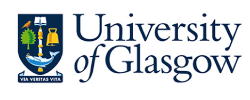PRIMARY SOURCES
ON COPYRIGHT
(1450-1900)
Browse Documents By...
Original Language...
Documents For...
Browse Commentaries By...
Browse Referred Persons By...
'Uncle Tom' at Law, New York (1853)
Source: American Antiquarian Society
Citation:
'Uncle Tom' at Law, New York (1853), Primary Sources on Copyright (1450-1900), eds L. Bently & M. Kretschmer, www.copyrighthistory.org
Back | Record | Images | No Commentaries
Translation only | Transcription only | Show all | Bundled images as pdf
No Translation available.
ding it to be printed in French, as the author designs to
issue it at Paris in a version prepared under his own
supervision.
But while the author has a moral claim to such ex-
clusive property in his book, it is far from certain that
our legislation is such as Mrs. Stowe's complaint against
Mr. Thomas would seem to suppose. Mr. Commissioner
Curtis, in his thorough and lucid treatise on Copyright,
- the best manual of the law on the subject, - while
inclining on general considerations, to favor the ex-
clusive right of the American author to publish his
work in other languages in this country, still says that
the question is an open one. However, the case is not
directly foreseen or provided for by the statute; and
unless Mrs. Stowe's position can be established in-
ferentially from its spirit, or from the construction of
some hitherto unnoticed phrase in its language, the
Court will have to decide against her. Should it do so,
a revision of the statute on copyright will be more than
ever necessary.
A point in the law, which would seem to be in favor of
Mr. Thomas, is the established right of any one to take
an author's work and rewrite it, or abridge it, putting the
same ideas into other words. This is a very considerable
limitation upon the absolute right of property, and may
very easily be construed to extend to translations. It
is not possible to say that a translation is in the same
words as the original, for not only is it in a different
language, but the construction of the sentences and the
very form of expression are often entirely changed.
Certainly it is a less infringement of the author's
right than an abridgement, for it is addressed to a public
quite different from that for which the work was first
written, while an abridgement may come into direct
competition with the original. Moreover, the law
already considers translations of foreign books as inde-
pendent works, and grants copyrights for them according-
ly. Whether the translation of an American book be-
longs in the same category, is now to be decided.
With regard to the merits of the contending Ger-
man translations of "Uncle Tom," we cannot speak in
detail, not having thoroughly examined either. But
from some specimens we have seen, we judge the one
published by Mr. Thomas to be superior to that made
for Mrs. Stowe. At any rate, the latter has some very
gross faults, which prove that the translator neither
understands English thoroughly, nor knows how to write
German with respectable correctness.
___________________
___________________
Source: American Antiquarian Society
Citation:
'Uncle Tom' at Law, New York (1853), Primary Sources on Copyright (1450-1900), eds L. Bently & M. Kretschmer, www.copyrighthistory.org
Back | Record | Images | No Commentaries
Translation only | Transcription only | Show all | Bundled images as pdf
No Translation available.
ding it to be printed in French, as the author designs to
issue it at Paris in a version prepared under his own
supervision.
But while the author has a moral claim to such ex-
clusive property in his book, it is far from certain that
our legislation is such as Mrs. Stowe's complaint against
Mr. Thomas would seem to suppose. Mr. Commissioner
Curtis, in his thorough and lucid treatise on Copyright,
- the best manual of the law on the subject, - while
inclining on general considerations, to favor the ex-
clusive right of the American author to publish his
work in other languages in this country, still says that
the question is an open one. However, the case is not
directly foreseen or provided for by the statute; and
unless Mrs. Stowe's position can be established in-
ferentially from its spirit, or from the construction of
some hitherto unnoticed phrase in its language, the
Court will have to decide against her. Should it do so,
a revision of the statute on copyright will be more than
ever necessary.
A point in the law, which would seem to be in favor of
Mr. Thomas, is the established right of any one to take
an author's work and rewrite it, or abridge it, putting the
same ideas into other words. This is a very considerable
limitation upon the absolute right of property, and may
very easily be construed to extend to translations. It
is not possible to say that a translation is in the same
words as the original, for not only is it in a different
language, but the construction of the sentences and the
very form of expression are often entirely changed.
Certainly it is a less infringement of the author's
right than an abridgement, for it is addressed to a public
quite different from that for which the work was first
written, while an abridgement may come into direct
competition with the original. Moreover, the law
already considers translations of foreign books as inde-
pendent works, and grants copyrights for them according-
ly. Whether the translation of an American book be-
longs in the same category, is now to be decided.
With regard to the merits of the contending Ger-
man translations of "Uncle Tom," we cannot speak in
detail, not having thoroughly examined either. But
from some specimens we have seen, we judge the one
published by Mr. Thomas to be superior to that made
for Mrs. Stowe. At any rate, the latter has some very
gross faults, which prove that the translator neither
understands English thoroughly, nor knows how to write
German with respectable correctness.
___________________











